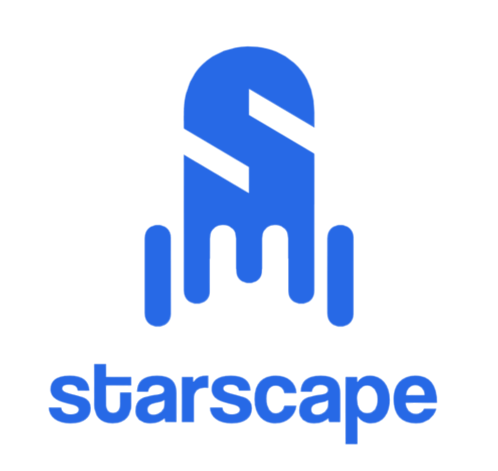Hi, Dave Fox here from Starscape SEO. In today’s fast-paced digital world, infographics have become an indispensable tool for conveying information quickly and effectively.
However, the size of an infographic plays a crucial role in its success.
Choosing the right dimensions ensures that your visual content is not only eye-catching but also optimized for its intended platform.
In this guide, we’ll explore the best infographic sizes and the reasons behind their effectiveness.
Standard Infographic Size: 600 px Wide x 1200 px Tall

Why It Works:
Versatility: The 600 x 1200 px size is the most commonly recommended for infographics, offering a balanced layout that works well across various platforms.
It’s wide enough to include detailed information and tall enough to guide the viewer through a logical flow of content.
Compatibility: This size is perfect for blogs, email newsletters, and other online platforms, ensuring that the infographic is neither too large to load quickly nor too small to lose its impact.
Blog Post Infographic Size: 800 px Wide x 1200 px Tall

Why It Works:
Enhanced Readability: A slightly wider infographic, such as 800 x 1200 px, offers more room for content, making it easier to include detailed graphics and longer text blocks without crowding the design.
Optimal Fit for Blog Layouts: Many modern blog themes have wider content areas, and this size takes full advantage of that space, making the infographic the focal point of the post.
Social Media-Specific Sizes

Facebook: 1200 px Wide x 630 px Tall

Why It Works:
Maximum Engagement: This size ensures that your infographic appears clearly in the newsfeed, without getting cropped or losing vital information. The aspect ratio is optimized for Facebook’s layout, making it ideal for sharing and boosting engagement.
Instagram: 1080 px Wide x 1080 px Tall

Why It Works:
Square Perfection: Instagram’s square format is iconic, and using a 1080 x 1080 px size guarantees that your infographic looks sharp and well-composed on users’ feeds. This size is also perfect for ensuring that your content is visible in its entirety without any need for scrolling.
Pinterest: 735 px Wide x 1102 px Tall

Why It Works:
Vertical Impact: Pinterest favors vertical images, and the 735 x 1102 px size fits perfectly within its columns.
This size ensures that your infographic stands out and is easily viewable, making it more likely to be pinned and shared.
Twitter: 1200 px Wide x 675 px Tall

Why It Works:
Tweet-Worthy: Twitter’s landscape orientation is best suited for a 1200 x 675 px infographic.
This size ensures that your infographic takes up a significant amount of space in the feed, drawing attention and increasing the likelihood of retweets.
Email-Friendly Infographic Size: 600 px Wide x 900 px Tall

Why It Works:
Perfect Fit for Inboxes: Emails have limited space, and an infographic that is 600 x 900 px fits neatly without overwhelming the recipient.
This size also ensures that the infographic is easy to read on both desktop and mobile email clients.
LinkedIn Infographic Size: 1200 px Wide x 628 px Tall

Why It Works:
Professional Presentation: LinkedIn is a platform where professionalism is key.
A 1200 x 628 px infographic is ideal for maintaining clarity and a polished look while ensuring your content is easy to digest for business professionals.
Print-Friendly Infographic Sizes
Letter Size: 8.5 x 11 inches

Why It Works:
Common Format: This size is the standard for documents, making it easy to print and distribute.
It’s perfect for infographics intended for handouts, presentations, or flyers.
Tabloid Size: 11 x 17 inches

Why It Works:
Extra Space: For more detailed infographics, a larger tabloid size offers ample space for graphics, text, and data visualization.
This size is ideal for posters or more in-depth visual content.
Super Duper Long Infographic
![]()
Oh, and lest we forget…
The “Super Duper Long” infographic is designed to be extraordinarily tall, often exceeding 3000 pixels in height, and sometimes even reaching 10,000 pixels or more.
This format is typically used for in-depth, data-rich content that requires a significant amount of vertical space to fully explore a topic.
It allows for a detailed, step-by-step narrative, guiding the viewer through complex information or a comprehensive timeline.
Why It’s Out There: This size is ideal for storytelling, detailed tutorials, or extensive data visualizations that benefit from a sequential flow.
The length allows creators to present information in a way that unfolds naturally, making it perfect for educational content, long-form blog posts, or deep dives into complex subjects.
However, it’s important to note that this format is best suited for platforms that support vertical scrolling, such as Pinterest or certain blogs, where users are more likely to engage with longer content.
Conclusion
Choosing the right size for your infographic is more than just a matter of aesthetics; it’s about ensuring that your content is seen and understood by your audience in the best possible way.
By understanding the optimal sizes for different platforms and purposes, you can create infographics that are not only visually appealing but also highly effective in communicating your message.
Whether you’re designing for a blog, social media, or print, these recommended sizes provide a solid foundation to help your infographics shine.
Now that you know the best sizes and why they work, you’re ready to create compelling visual content that captures attention and drives engagement.

Call or Text Starscape SEO: (519) 208-8680


